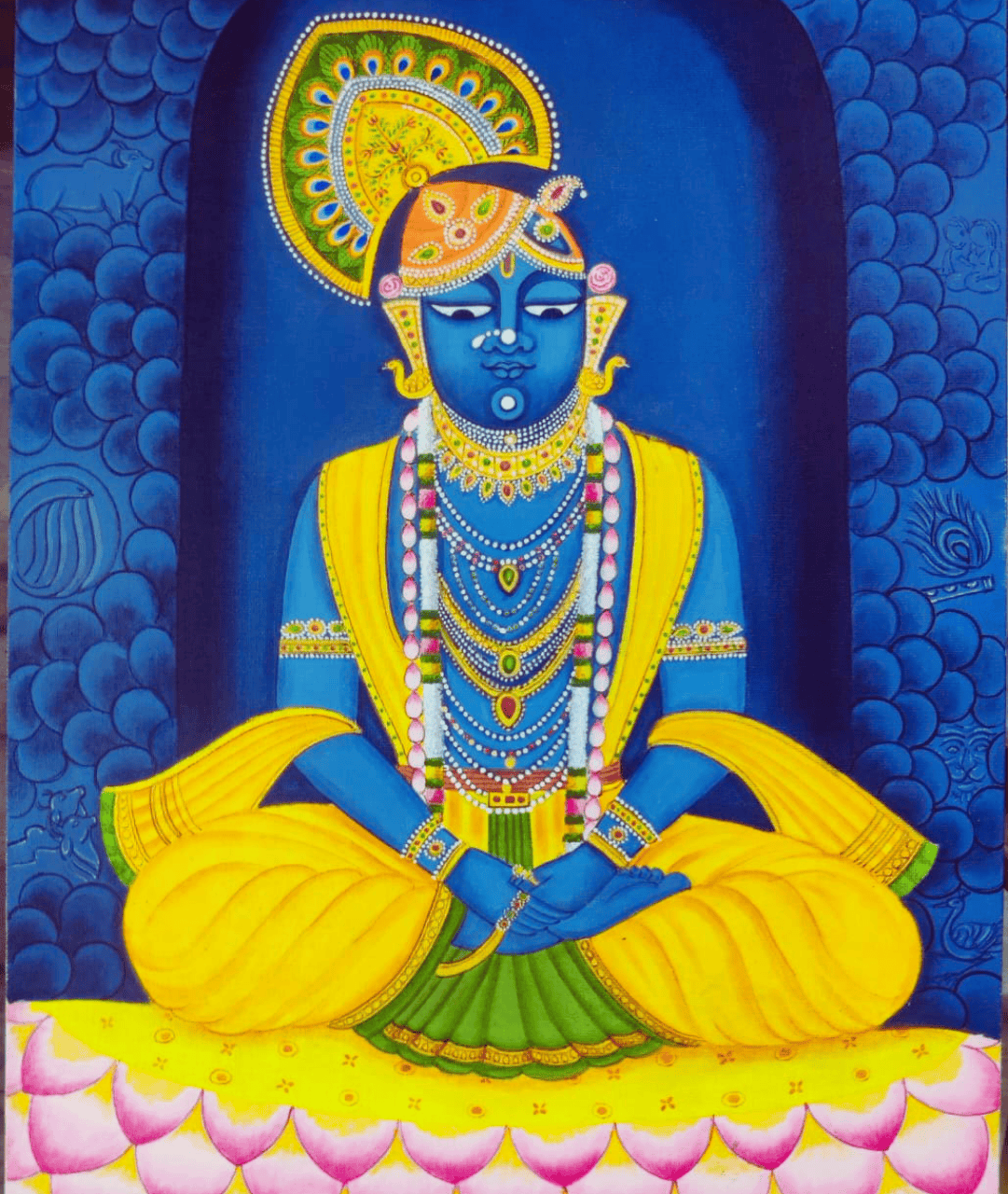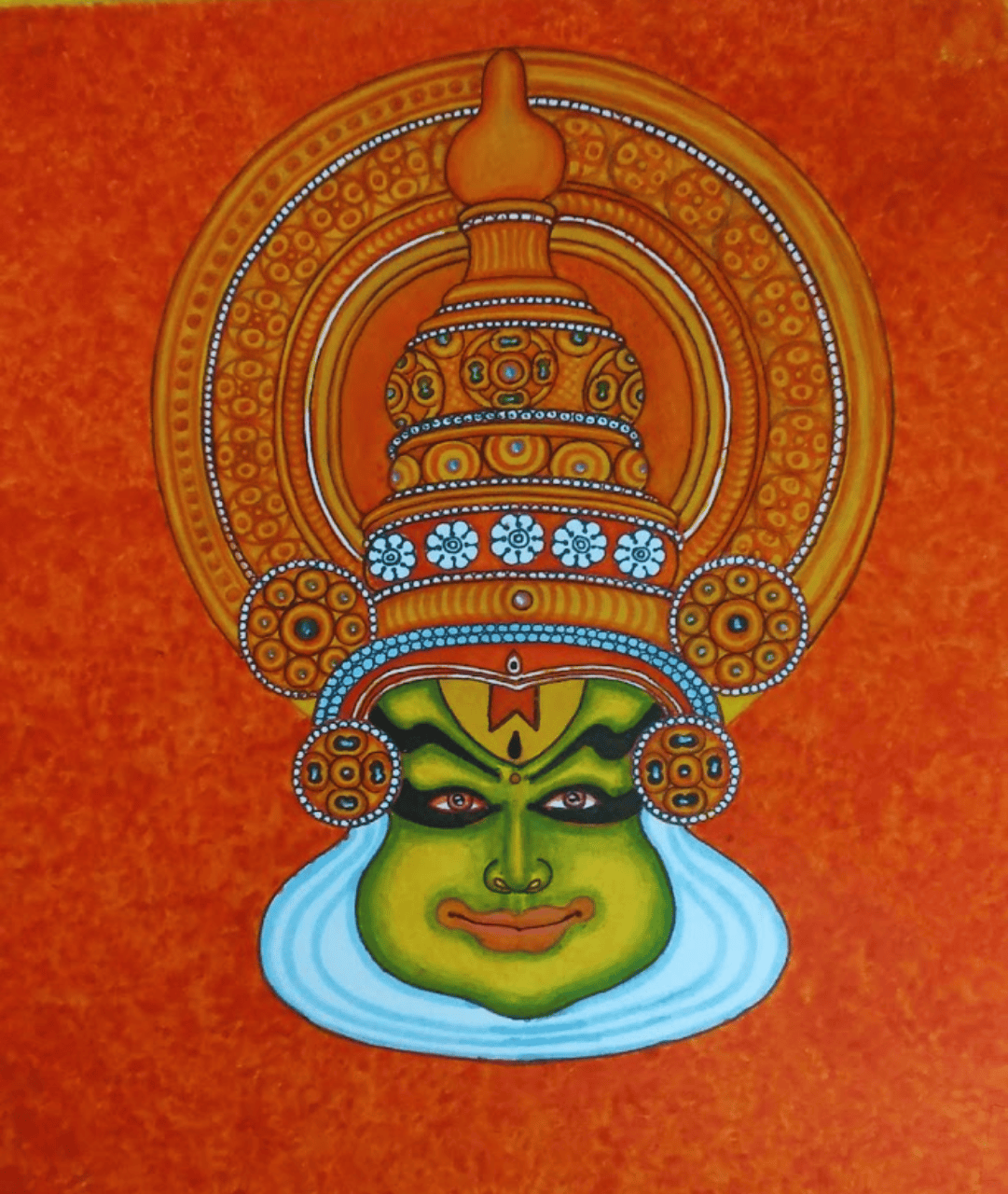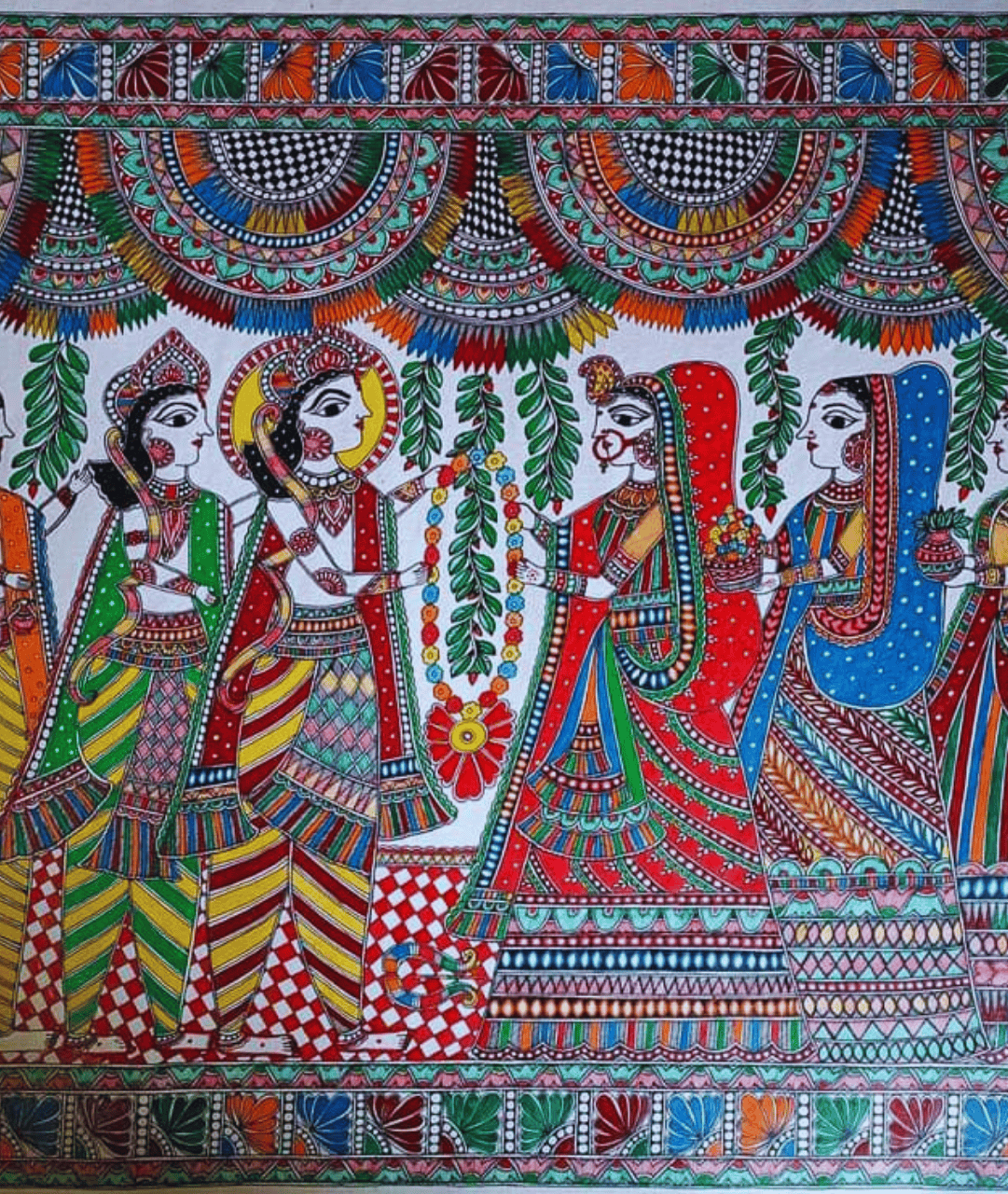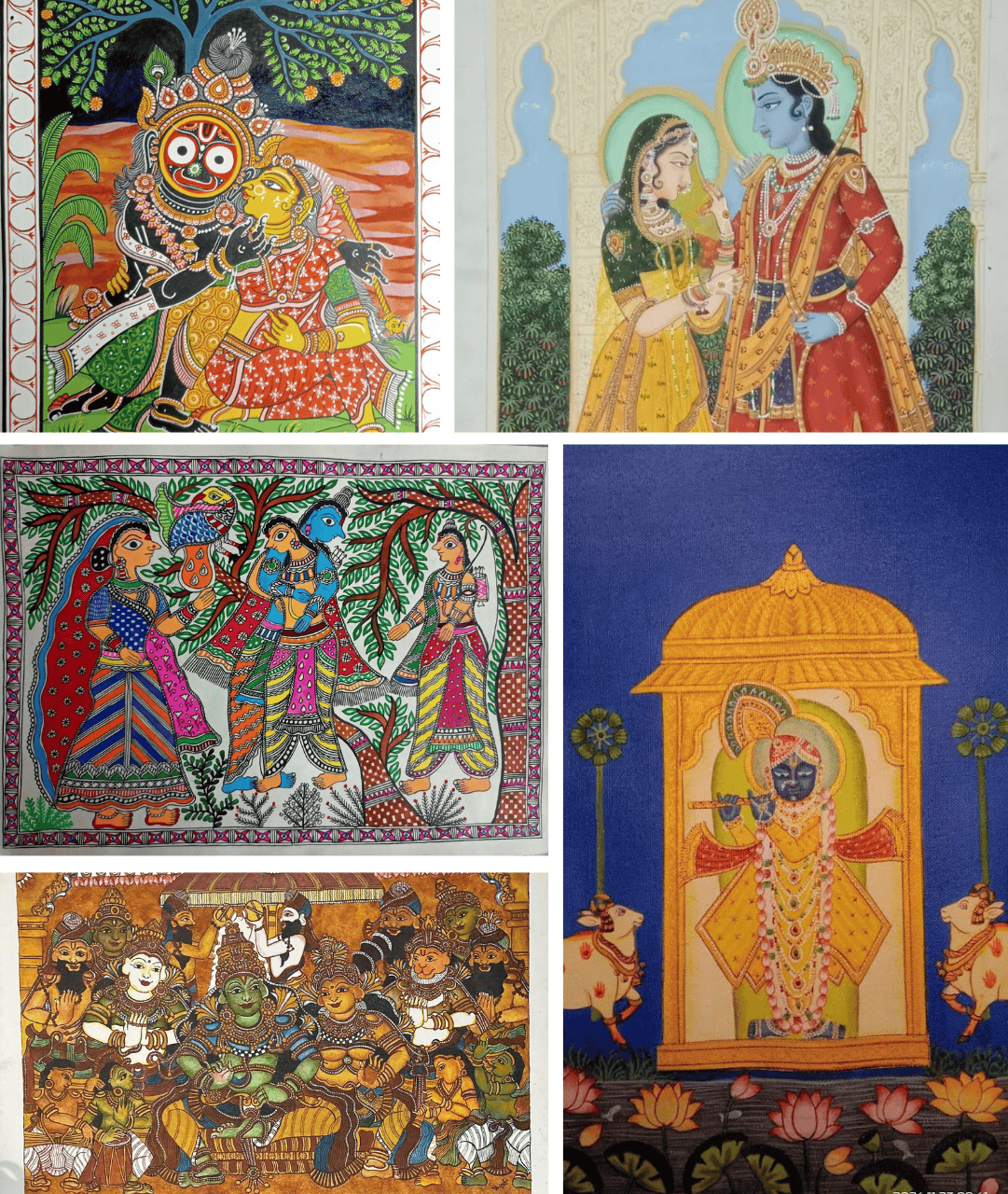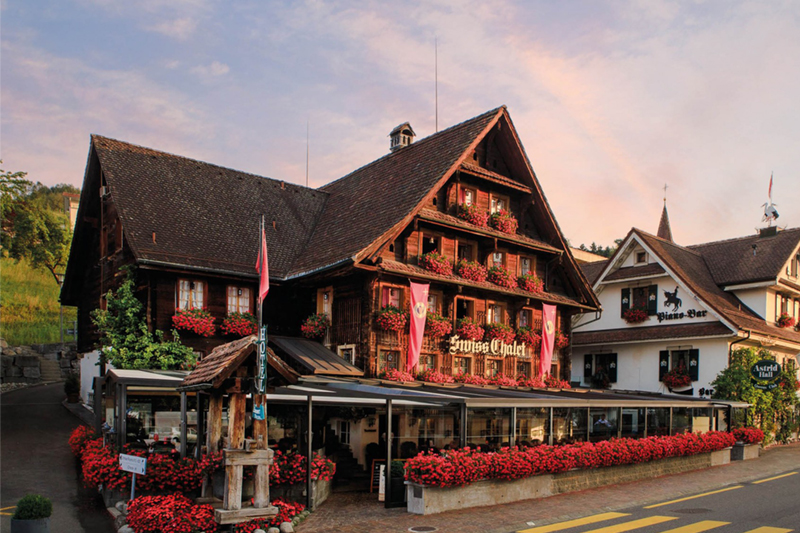You have seen the stick-like figures everywhere, on saris, rugs, lampshades and more. Two triangles, one inverted and joined at the tip, with simple lines depicting motions - this is the ancient art of the Warli tribe. The Warlis live around the mountainous and coastal region around the Gujrat & Maharshtra border in Western India. While much of their lives have been changed with the advent of modernisation, they still retain their unique propensity for recording the passage of time through the lens of art. There is evidence of the art finding its origins in cave painting from Neolithic times. Let's explore the different themes of Warli Art.
When you look at Warli painting, the first thing that jumps out at you are the rudimentary shapes - circles, triangles and squares. The circle and triangle comes from their observation of Nature. The circles represent the sun & moon and the triangle represent mountains and pointed trees. The square seems to be a man-made construct, representing a sacred enclosure of a piece of land. This square is called "chauk" or "chaukat" and is usually painted by married women on the walls of the house on the occasion of marriages. A "Devchauk" is a square frame with the sun, moon, a comb, a ladder & a tarpa (a wind instrument said to be given to the Warlis by Narada himself) around it. It is ornately decorated and depicts Palaghata, the goddess of fertility in the centre.
Another important theme in Warli painting is the harvest in the village. Warlis were traditionally dependent on the land for subsistence and this love for nature is reflected in the way it is depicted in the paintings. Trees seem to be swaying in the breeze, birds chirp overhead and the Warlis are depicted hard at work in the fields. The triangular figures can be seen bending in the fields, making bundles, piling them, cooking food, chasing away animals and much more. The village scenes in warli painting are full of life and seem to celebrate the seemingly mundane.

Perhaps the most iconic theme in Warli painting is the Tarpa dance. The spiral design is made of up of men and women with a Tarpa player in the centre. This motif is based on the Tarpa Dance performed by the tribe. In this dance, the Tarpa player directs the dance with his Tarpa, a trumpet-like instruments like a snake charmer. The men and women sway back and forth rhythmically in a concentric spiral, never turning their backs to the Tarpa player and moving clockwise or anti-clockwise depending on the notes being played. This unique shape is also said to symbolize the circle of life and death.

The tree of life is another symbolic element in Warli painting. The tree represents human dependence on nature and the delicate balance of life. The tree of life is usually depicted as a central motif, towering over all the other elements in the painting and acting as an anchor to all the activities happening around it. The tree of life is also sometimes depicted as a singular object, with meticulously drawn leaves providing movement and a mesmerizing quality to it.

Finally, traditional motifs have given way to more modern themes. It was only in the 70's that Warli painting ceased to be done only for ritualistic purposes and its artistic merit was recognized. Since then, Warli painting has incorporated depictions of modern life like vehicles, buildings and more.









